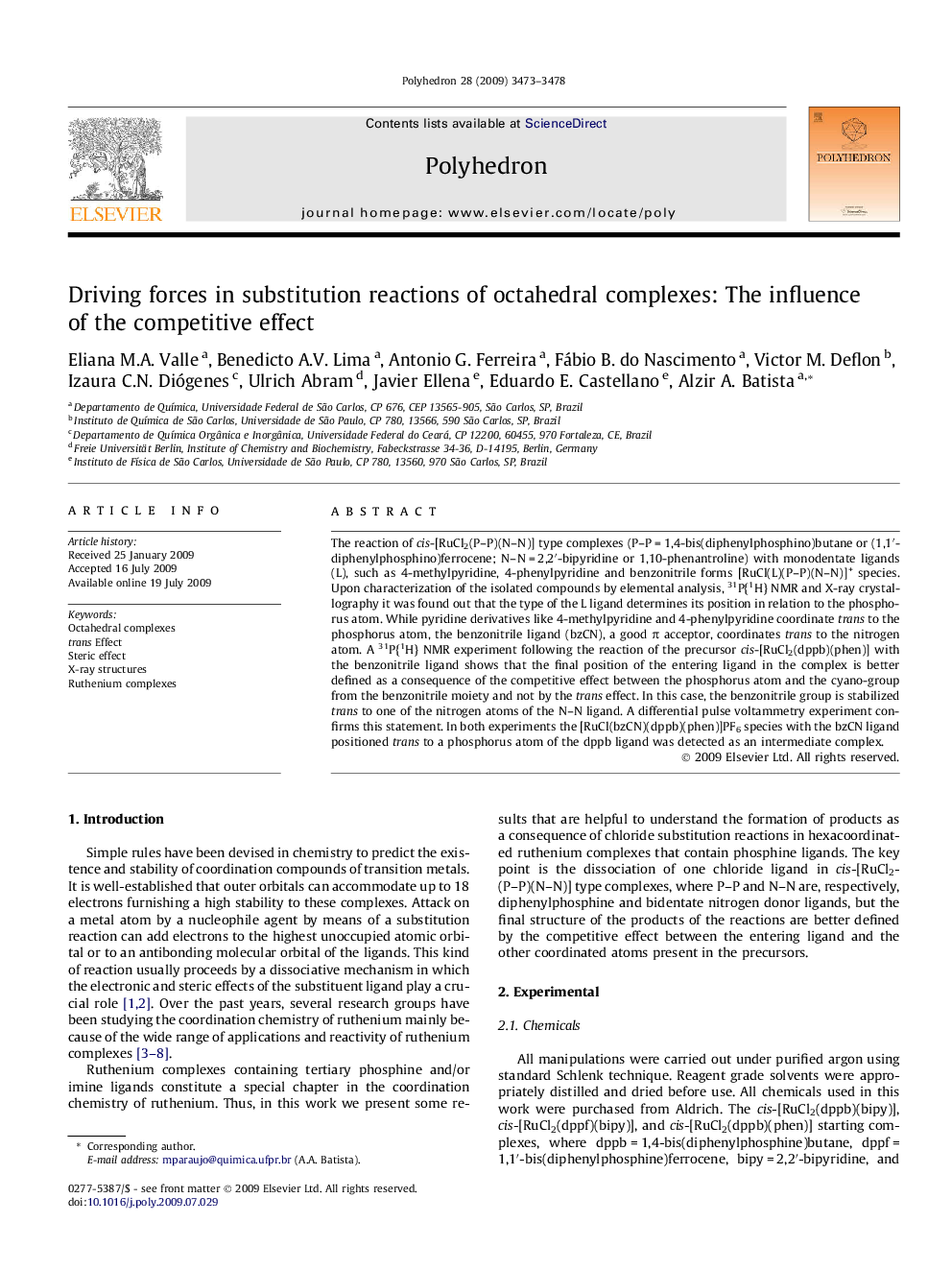| کد مقاله | کد نشریه | سال انتشار | مقاله انگلیسی | نسخه تمام متن |
|---|---|---|---|---|
| 1337247 | 979623 | 2009 | 6 صفحه PDF | دانلود رایگان |

The reaction of cis-[RuCl2(P–P)(N–N)] type complexes (P–P = 1,4-bis(diphenylphosphino)butane or (1,1′-diphenylphosphino)ferrocene; N–N = 2,2′-bipyridine or 1,10-phenantroline) with monodentate ligands (L), such as 4-methylpyridine, 4-phenylpyridine and benzonitrile forms [RuCl(L)(P–P)(N–N)]+ species. Upon characterization of the isolated compounds by elemental analysis, 31P{1H} NMR and X-ray crystallography it was found out that the type of the L ligand determines its position in relation to the phosphorus atom. While pyridine derivatives like 4-methylpyridine and 4-phenylpyridine coordinate trans to the phosphorus atom, the benzonitrile ligand (bzCN), a good π acceptor, coordinates trans to the nitrogen atom. A 31P{1H} NMR experiment following the reaction of the precursor cis-[RuCl2(dppb)(phen)] with the benzonitrile ligand shows that the final position of the entering ligand in the complex is better defined as a consequence of the competitive effect between the phosphorus atom and the cyano-group from the benzonitrile moiety and not by the trans effect. In this case, the benzonitrile group is stabilized trans to one of the nitrogen atoms of the N–N ligand. A differential pulse voltammetry experiment confirms this statement. In both experiments the [RuCl(bzCN)(dppb)(phen)]PF6 species with the bzCN ligand positioned trans to a phosphorus atom of the dppb ligand was detected as an intermediate complex.
The preparation and crystal structure of four Ru(II) complexes of formula [RuCl(L)(dppb)(N-N)]PF6 (L = 4-methylpyridine, 4-phenylpyridine, benzonitrile; dppb = 1,4-bis(diphenylphosphino)butane or 1,1′-bis(diphenylphosphino)ferrocene; N-N = 2,2′-bipyridine or 1,10-phenantroline are reported here. In these complexes the chloride trans to the phosphorus atoms is more labile than that one trans to the nitrogen atoms, but the final position of the entering good π acceptor ligand is better defined by the competitive effect.Figure optionsDownload as PowerPoint slide
Journal: Polyhedron - Volume 28, Issue 16, 3 November 2009, Pages 3473–3478